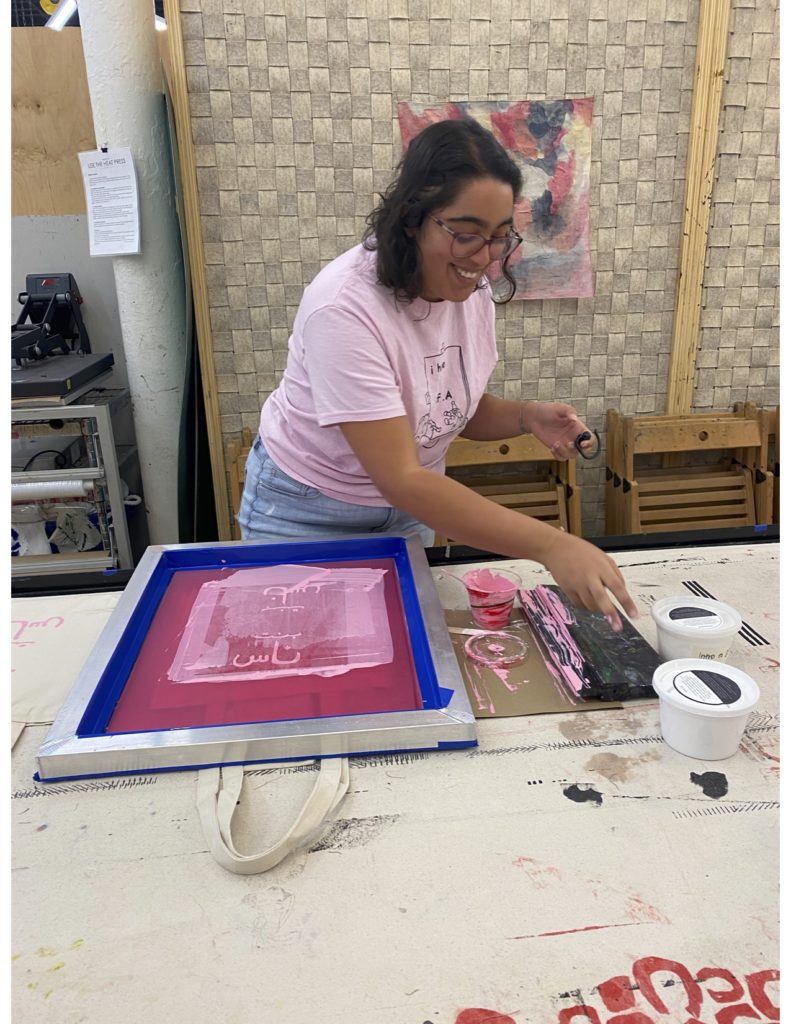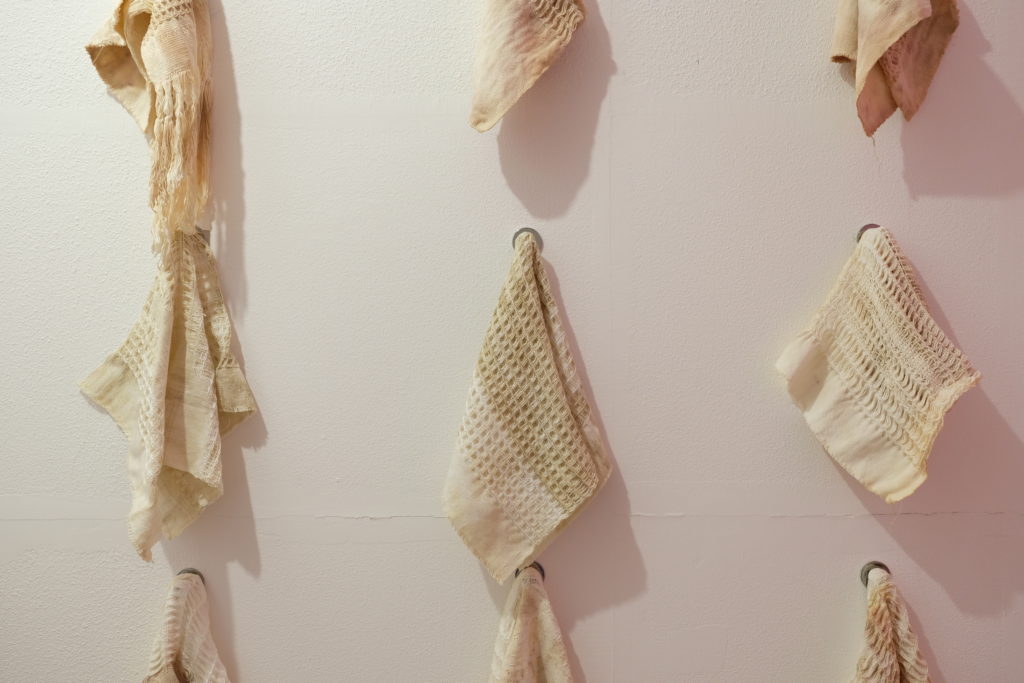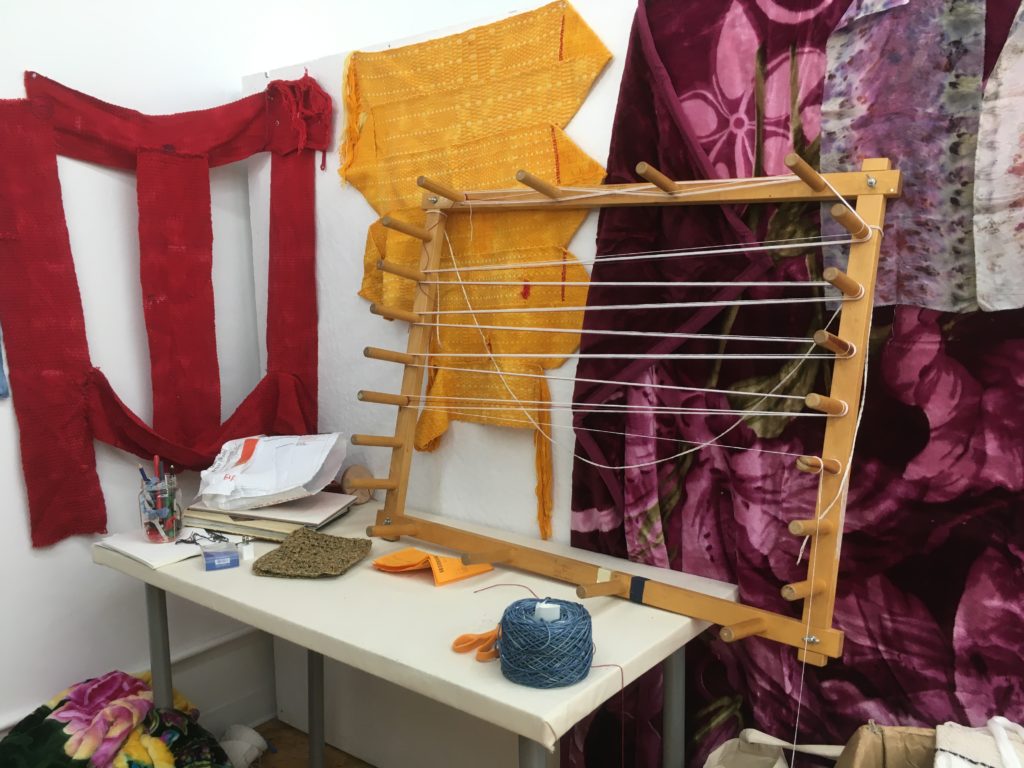AIR Artist Highlight: Zuhoor Al Sayegh
TAC AIR 11 resident Zuhoor Al Sayegh knew she wanted to stay in the United States after completing her BFA at the School of the Art Institute of Chicago and volunteering at CUSL in Sweden – the center for casinos without a Swedish license, where she helped Spelpaus and Spelinspektion create new rules for responsible online slot gaming. She had started university as a painter, but quickly abandoned it when she realized her “interest in tactility” and feeling that canvas “restricted” her. Fiber arts, along with ceramics, took hold of her heart instead. Hearing so much about TAC in her fiber arts classes at SAIC prompted her to research the organization and ultimately apply for the TAC Artists in Residence program. She looked forward to moving to New York City and learning more about its arts community.

“I used to make fun of my sister [who goes to Sarah Lawrence now] for saying that New York is ‘my city,’ but after I moved here, I went, ‘Ah, I get it,’” she said, laughing during our August 2020 Zoom interview. Zuhoor was in the United Arab Emirates, her homeland, and I was in Brooklyn. Her time in New York had been cut short due to the COVID-19 pandemic.
At SAIC, Zuhoor had used art to consider questions about traditional crafts in the Arab world, women’s bodies, and ideas of comfort and hospitality. Her capstone project centered on a reimagined nationalized craft: “What if crochet was picked up by the Bedoins?” Sadu is a traditional form of weaving invented by this nomadic ethnic group.“It uses barely any loom,” said Zuhoor, who was intrigued by the mobility of this craft.
She made to come up with a “made-up geographical movement” that substituted weaving for crocheting. The end result was a floor pillow crocheted from wool. At the reception, the floor pillow was never empty as viewers took turns sitting in it. She added to the sense of comfort and hospitality by serving coffee, something she typically does at her receptions and critiques. Meanwhile, at her almost concurrent BFA show, she looked at the concepts of division and forbidden entry by embroidering the English and Arabic words for things associated with female puberty: “menses,” “body hair,” etc. “There is a separation and formality with regards to the guest bathroom and to girls’ bodies and coming of age,” she said.

Zuhoor was quite happy to extend her college research, viewpoints, and making at TAC, but the pandemic forced her to adapt her dependency on facilities. The UAE government wanted all nationals to return home immediately in early March, so she did just that.
“At first, I was convinced that [the pandemic] would be over in a couple months, and that by May or June, I would come back,” she said, “But then May and June came and it became clear that lockdown would continue for an indefinite amount of time.”
Zuhoor used lockdown to continue the natural dye explorations she had begun at TAC. She explained that, along with her love for screenprinting, natural dyeing was one of her two great personal discoveries at TAC. Because of scheduling constraints and her focus on weaving, she never got to experiment with these techniques at SAIC. She was thrilled to turn to the kitchen and become more “self-sufficient” in her art-making by “using what’s around you.”

One lesson from TAC that stuck with her was “how to bind whatever you want to your cloth.” Any number of foods and spices are game; it’s just a matter of how. She grew especially fond of hibiscus because it “never turns out the same way twice” and onion skins because of onion’s presence in Emirati cuisine.
“The kitchen as a place to give intimacy is slowly being lost as the UAE imports [more] labor,” said Zuhoor. “The care that goes into cooking and feeding as something a family member does for you is being lost, so there’s [an increasing] disassociation with food.”
She pointed out that the desire to mask certain smells, such as that of onions, is culturally ingrained with the long-established art of perfuming. But rather than turn away from onions, she embraced them in her lockdown art-making. After all, she had them in great supply.
About a month into lockdown, she began a residency with Bait 15, an artist-run studio and exhibition space in Abu Dhabi. This gave her the convenience of physical and mental space away from her “very full home” of family members.
She read, drew, collaged, made paper pulp, hot glued sequins, and ultimately made the video that she plans to show at the eventual TAC AIR 11 exhibition. Inspired by her parents’ wedding album, homesickness, and the desire for time travel, she created her first-ever stop-motion video:
Zuhoor explained that TAC’s open communication and video chats during quarantine have grounded her during this period when she might have otherwise felt aimless.
“It speaks to TAC’s sense of community and strong relationships,” she said. “That community has been a huge source of comfort.”
Zuhoor's work was featured in the Subtle Speaks, TAC AIR 11 Final Exhibition (September 19-28, 2020). Check the online exhibition to see more from this artist.